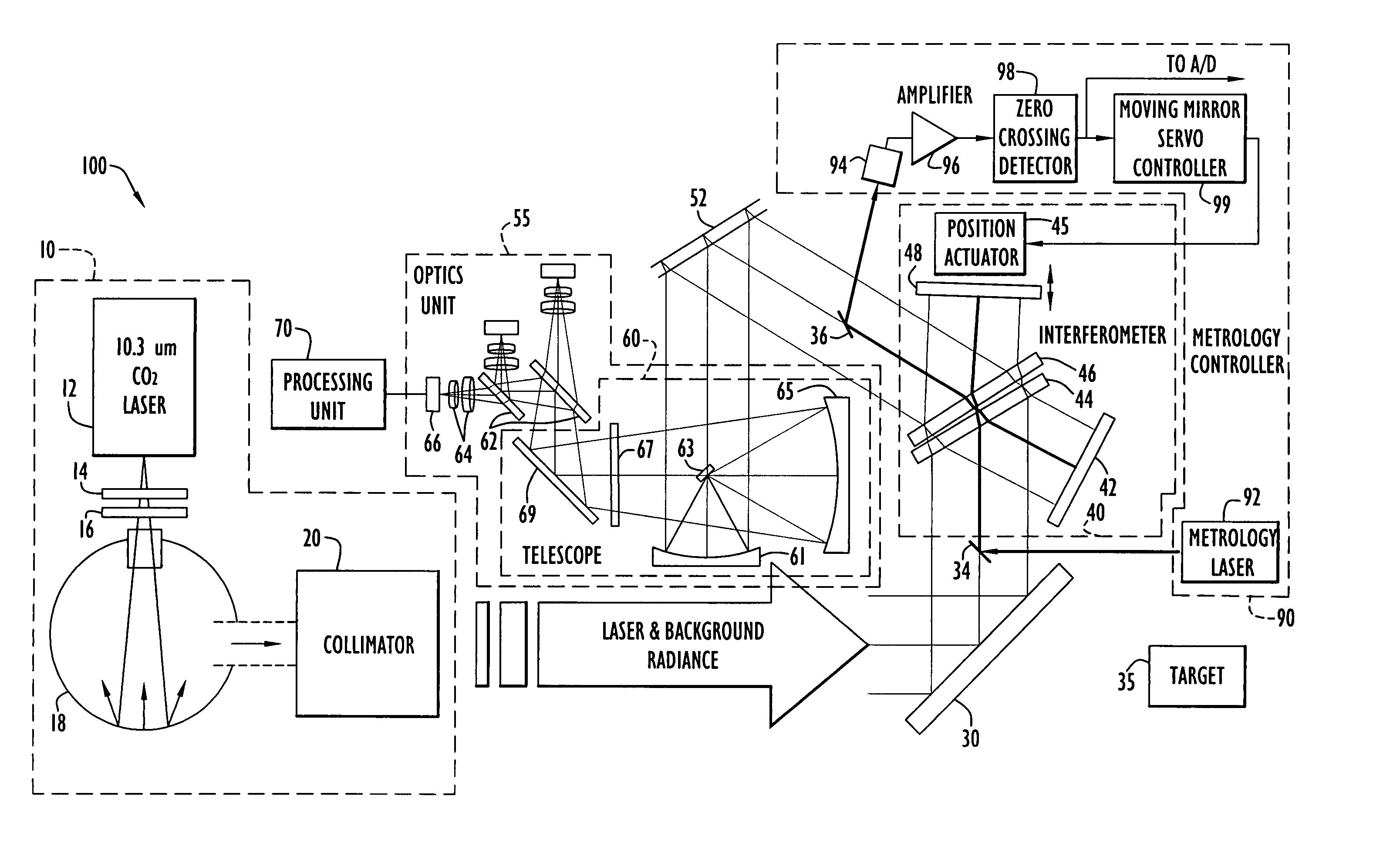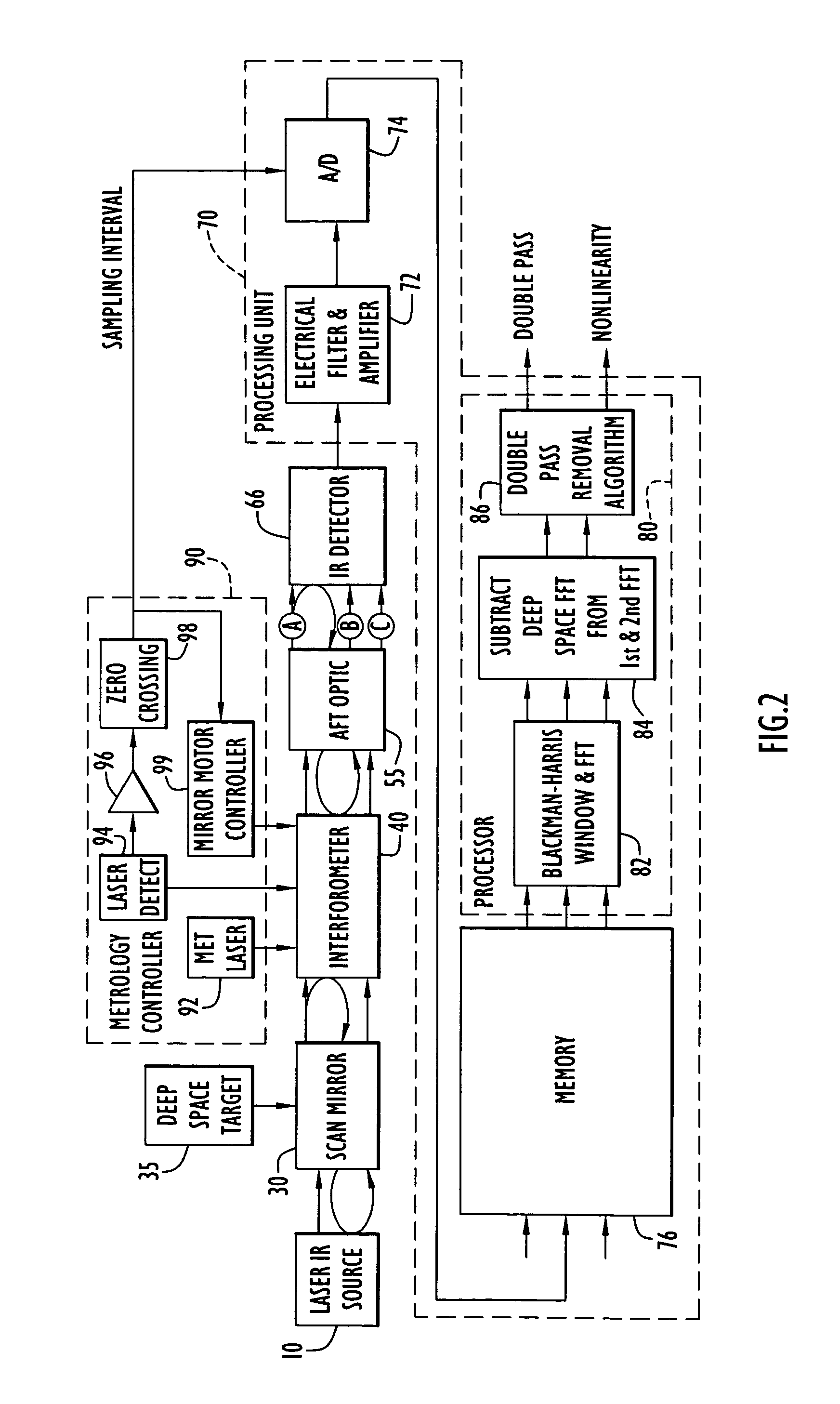Method and apparatus for measurement of optical detector linearity
a linearity and optical detector technology, applied in the direction of optical radiation measurement, instruments, spectrometry/spectrophotometry/monochromators, etc., can solve the problems of significant measurement errors, adversely affecting or distorting the results produced by the calibrated radiance target technique, etc., and achieve the effect of improving accuracy
- Summary
- Abstract
- Description
- Claims
- Application Information
AI Technical Summary
Benefits of technology
Problems solved by technology
Method used
Image
Examples
Embodiment Construction
[0035]The present invention system generates optical signals for detection by a detector to determine the detector non-linearity. The generated signals are modulated and sampled in accordance with the position of a moving interferometer porchswing mirror to ensure sinusoidal modulation as described below. The sampled signal includes components respectively attributed to reflection of the signal within the optical system and / or detector non-linearity. These components are identified within the sampled signal based on a harmonic analysis, where the non-linearity component indicates the detector non-linearity as described below. The system optical arrangement and harmonic analysis enable the non-linearity measurement to be performed with enhanced accuracy.
[0036]A system 100 for measuring detector non-linearity according to the present invention is illustrated in FIGS. 1–2. Specifically, system 100 includes a laser source 10, a scene select module 30, an interferometer 40, an optics uni...
PUM
 Login to View More
Login to View More Abstract
Description
Claims
Application Information
 Login to View More
Login to View More - R&D
- Intellectual Property
- Life Sciences
- Materials
- Tech Scout
- Unparalleled Data Quality
- Higher Quality Content
- 60% Fewer Hallucinations
Browse by: Latest US Patents, China's latest patents, Technical Efficacy Thesaurus, Application Domain, Technology Topic, Popular Technical Reports.
© 2025 PatSnap. All rights reserved.Legal|Privacy policy|Modern Slavery Act Transparency Statement|Sitemap|About US| Contact US: help@patsnap.com



